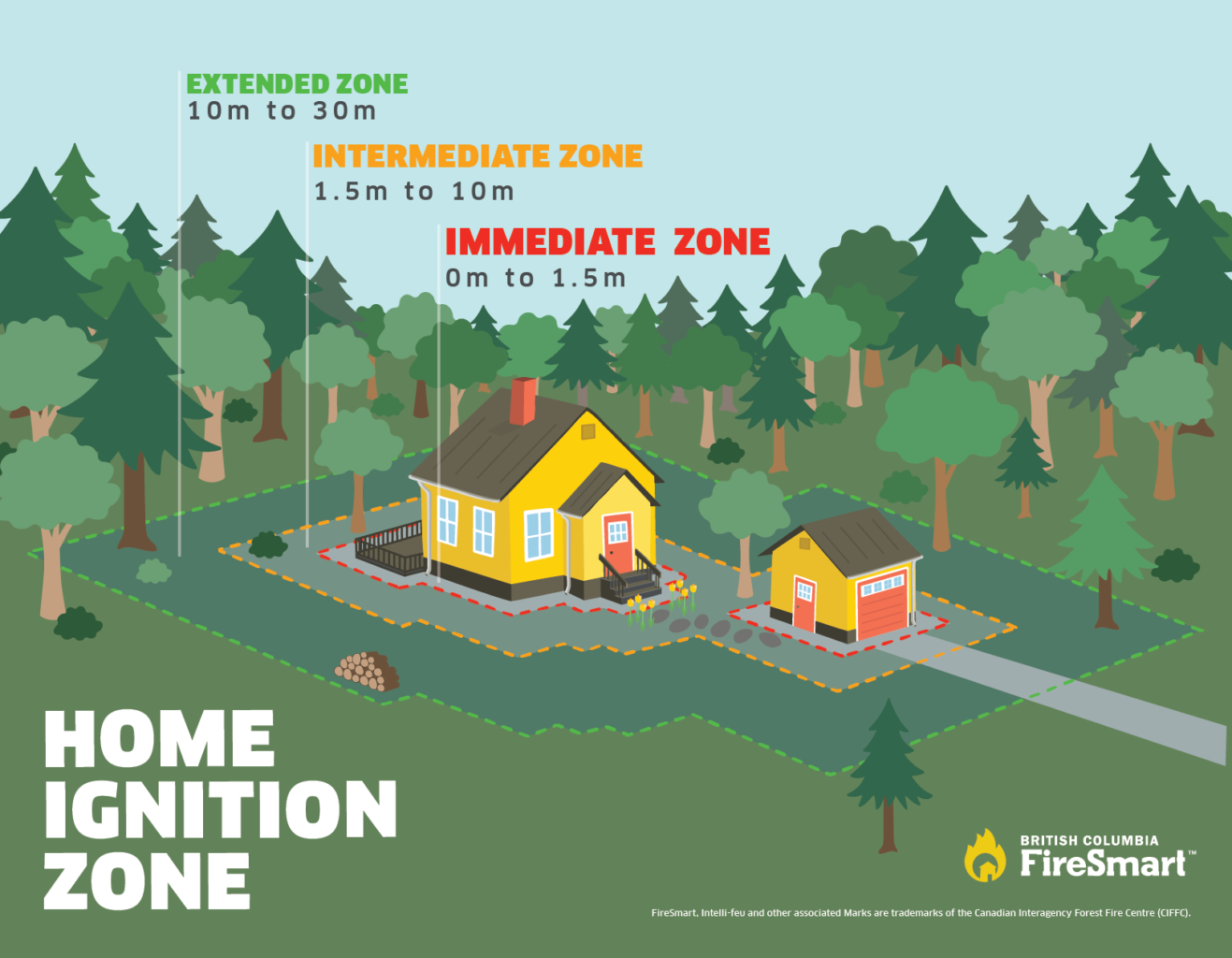On August 17, 2023, the world turned upside down for the City of West Kelowna. As the McDougall Creek wildfire spread throughout the city, hundreds of residents were forced to evacuate and leave their homes behind.
“In terms of fire behaviour, everything aligned that day,” said Chief Jason Brolund of the West Kelowna Fire Department. “It hit us everywhere, and it hit us fast. Ultimately, the losses for our community were staggering. It was gut-wrenching for us. But, we also see the wins. We see entire neighbourhoods that were saved by the hard work of firefighters. We also see individual homes that are left standing when it just doesn’t make any sense why. Often, that sense can be found because people have followed FireSmart principles.”
FireSmart principles consist of proven, science-based steps that residents can take to reduce the wildfire risks associated with their property. While each step can be the difference that helps a home survive a wildfire, it can be difficult to determine where to begin the wildfire resilience journey. For Deanna Hamilton, a West Bank First Nations resident, her journey began with a Home Ignition Zone Assessment.
It All Started With an Assessment
Home Ignition Zone Assessments are conducted by Local FireSmart Representatives (LFRs) to assess the wildfire risks associated with a property by using the Home Ignition Zone. During this free assessment, the LFR will take note of potential wildfire hazards in each zone and provide a tailored list of recommendations/changes that should be implemented to reduce risk.

Deanna proactively recognized that her home may be at risk and set out to begin her FireSmart journey. “We had a feeling it might get to this need for fire mitigation,” said Deanna. “So, we called FireSmart and Bryce Stirling came along to help us review our property. We wanted to make sure the house would be safe.”
Through this assessment, Bryce was able to identify several small changes that could be quickly made to the property to significantly increase wildfire resilience. “For the Home Ignition Zone Assessment, we started with the house, worked from the roof down, walls out, and into the extended property,” said Bryce Stirling, the FireSmart Coordinator for West Kelowna. “I really put an emphasis on the Immediate Zone here, as vegetation was the primary concern for this property.”
Starting with the Immediate Zone and moving outwards is a great way to identify the most pressing wildfire risks and address them. From taking note of messy gutters to making a plan to remove bark mulch from your garden beds, it’s not only massive projects that can increase wildfire resilience. In fact, it’s often a collection of smaller tasks that can make a big difference.
Small Changes, Big Difference
It’s the little things—cutting grass, removing flammable vegetation, and removing flammable debris—that can be a way to get easy wins and significantly increase the fire resilience of a property. “FireSmart is about identifying where we are in terms of risk level and what steps we can perform to lower that risk level,” says Bryce. “We’re not looking for perfect; we’re looking for better. It doesn’t have to be a world-ending amount of work. It can just be those little chunks that get things done.”
Sometimes, it’s the tasks you may not even think about that can make all the difference. After all, some elements of your property can appear harmless even if they pose a significant fire hazard. “As Bryce went around, he suggested which trees to remove and which undergrowth to take out,” said Deanna. “I had no idea some of these things needed to be accomplished. And even now, it’s given me some ideas for next spring and how we can continue to make our property safer.”
For Deanna, she was instructed to remove bark mulch in her garden beds, remove flammable vegetation from the Immediate Zone, and cut her grass below 10 centimetres. These small changes allowed Deanna to make a big difference for her property. And it’s these same changes that may have allowed her home to survive the devastating McDougall Creek wildfire. While her home was surrounded by fire, it remained standing thanks in large part to the proactive steps she took to reduce risk.
“We acted on these recommendations and I honestly think that’s one of the reasons my house survived,” says Deanna. “FireSmart is something that can be done. In fact, when I left, I thought ‘if any place is going to be safe at this moment, it will be us’ and that turned out to be true.”
What You Can Do
It’s all too easy to feel helpless in the face of wildfires. But that doesn’t have to be the case. If you want to begin your FireSmart journey, a free Home Ignition Zone Assessment is a great place to start. Simply connect with your Local FireSmart Representative to schedule an assessment for your property. In addition to the assessment, there are several resources—like the FireSmart Begins at Home Guide—that can direct you in your efforts. This will allow you to take action before a wildfire is on your doorstep, just like Deanna did.
FireSmart principles are relevant throughout the year, even when the weather cools down. While it does take a little work to make your property FireSmart, it’s worth it. Wildfires can strike without warning, so it’s best to be prepared. “Just because we’ve had a fire doesn’t mean we won’t have another one,” says Chief Jason Brolund. “FireSmart principles are just as relevant today as they were before the fire.”
To learn more about the McDougall Creek wildfire and how Deanna’s home survived it, watch the video below:
